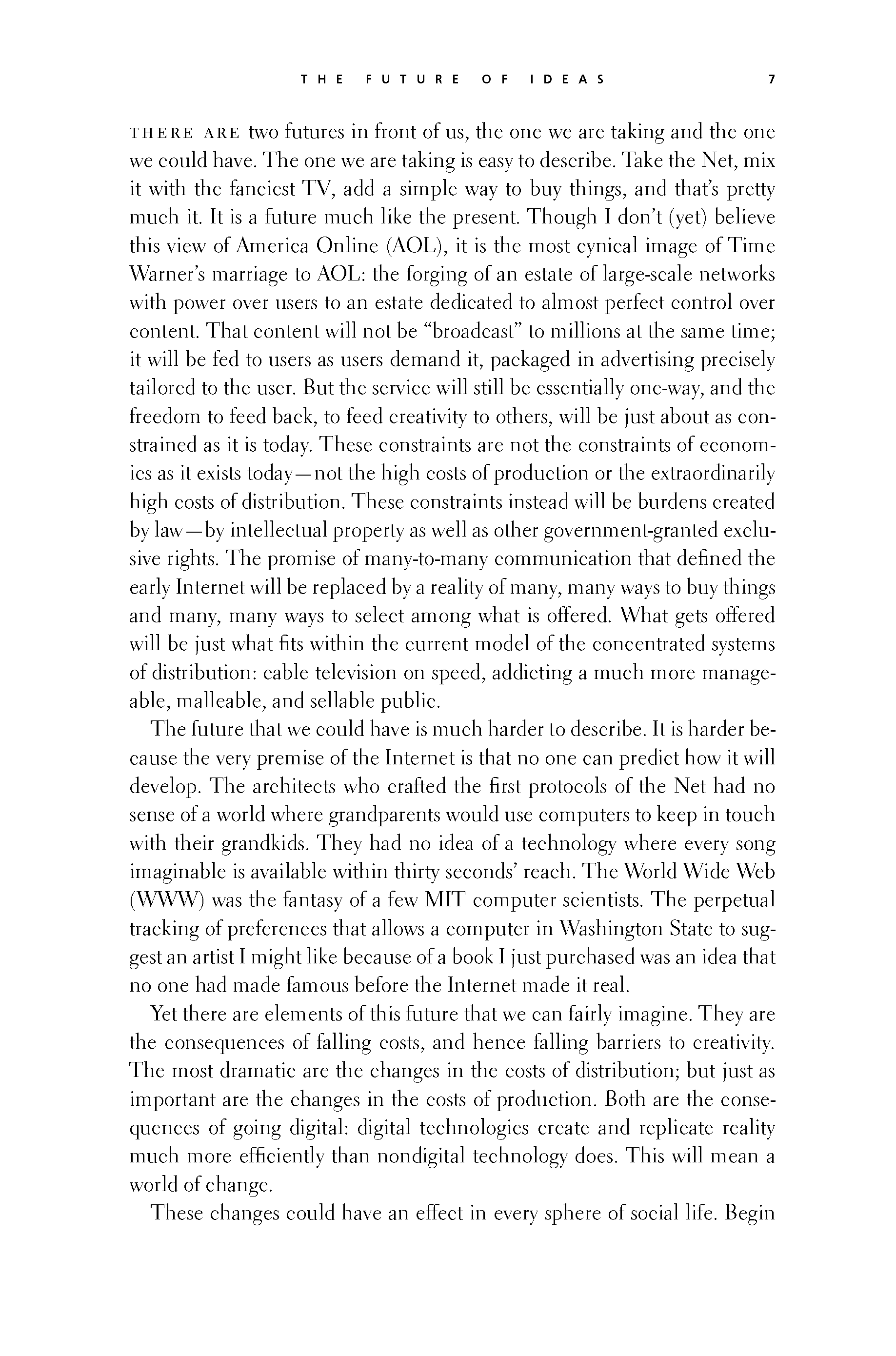 p006 _
-chap- _
toc-1 _
p007w _
toc-2 _
+chap+ _
p008
p006 _
-chap- _
toc-1 _
p007w _
toc-2 _
+chap+ _
p008
///\\\
There are two futures in front of us, the one we are taking and the one
we could have. The one we are taking is easy to describe. Take the Net, mix
it with the fanciest TV, add a simple way to buy things, and that's pretty
much it. It is a future much like the present. Though I don't (yet) believe
this view of America Online (AOL), it is the most cynical image of Time
Warner's marriage to AOL: the forging of an estate of large-scale networks
with power over users to an estate dedicated to almost perfect control over
content. That content will not be "broadcast" to millions at the same time;
it will be fed to users as users demand it, packaged in advertising precisely
tailored to the user. But the service will still be essentially one-way, and the
freedom to feed back, to feed creativity to others, will be just about as con-
strained as it is today. These constraints are not the constraints of econom-
ics as it exists today -- not the high costs of production or the extraordinarily
high costs of distribution. These constraints instead will be burdens created
by law -- by intellectual property as well as other government-granted exclu-
sive rights. The promise of many-to-many communication that defined the
early Internet will be replaced by a reality of many, many ways to buy things
and many, many ways to select among what is offered. What gets offered
will be just what fits within the current model of the concentrated systems
of distribution: cable television on speed, addicting a much more manage-
able, malleable, and sellable public.
The future that we could have is much harder to describe. It is harder be-
cause the very premise of the Internet is that no one can predict how it will
develop. The architects who crafted the first protocols of the Net had no
sense of a world where grandparents would use computers to keep in touch
with their grandkids. They had no idea of a technology where every song
imaginable is available within thirty seconds' reach. The World Wide Web
(WWW) was the fantasy of a few MIT computer scientists. The perpetual
tracking of preferences that allows a computer in Washington State to sug-
gest an artist I might like because of a book I just purchased was an idea that
no one had made famous before the Internet made it real.
Yet there are elements of this future that we can fairly imagine. They are
the consequences of falling costs, and hence falling barriers to creativity.
The most dramatic are the changes in the costs of distribution; but just as
important are the changes in the costs of production. Both are the conse-
quences of going digital: digital technologies create and replicate reality
much more efficiently than nondigital technology does. This will mean a
world of change.
These changes could have an effect in every sphere of social life. Begin
[[7]]
p006 _
-chap- _
toc-1 _
p007w _
toc-2 _
+chap+ _
p008